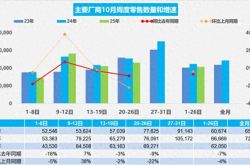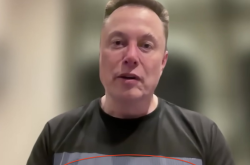Slow Business, Fast Iteration: Dipu Technology's Counterintuitive 7-Year Ascent
![]() 04/25 2025
04/25 2025
![]() 496
496

Imagine a company dedicating seven years to a singular focus, seemingly missing out on trends like Internet+ and data mid-platforms, yet emerging as a leader in domestic enterprise-level large models. This is the remarkable story of Dipu Technology.
Dipu Technology's entrepreneurial journey began in 2018, amidst China's software industry's most "inflated" year. Capital markets were ripe, and numerous startups selling data mid-platforms emerged. This fierce competition aimed at market share led to the distortion of Product-Market-Fit (PMF), ultimately failing in digitization as they achieved only superficial scale growth, leaving profitability issues unresolved.
Similar scenarios are unfolding in the era of large models.
The generative AI revolution sparked by OpenAI has excited entrepreneurs but also revealed deep contradictions in the enterprise market. While general large models can generate text, images, and videos, they struggle to penetrate enterprise data "black boxes." Despite Meta's open-source Llama2 lowering the technical threshold and DeepSeek achieving top-notch reasoning results with a low-cost architecture, industry Know-How engineering capabilities remain scarce.
Furthermore, the disconnect between AI benchmark settings and the real world has led to questions about the mythologization of large models. Real-world intelligent systems interact continuously and have memory, yet existing evaluation settings ignore these features, improving intelligence levels but not utility.
"Doing well in To C doesn't mean you can do To B; there's a natural gap between the two," says Zhao Jiehui, a self-proclaimed newcomer to the software industry with a unique background. Before entrepreneurship, he was a key member of Huawei's core router team, experiencing the communications industry's golden age. Shifting to enterprise services, he assessed the software industry: "Traditional enterprise IT is essentially just a database plus an interface, lacking technological content, but the industry's technical threshold will rise with large model AI."
Zhao Jiehui's understanding of advanced technology is forward-thinking. Soon after ChatGPT's popularity, he realized its disruptive potential for the traditional software industry. While others focused on industry large models, he took a different path, leading his team to focus on deeply decoupling industry Know-How and data asset engineering capabilities.
In his view, unlike the past where the AI community emphasized training stronger models, the logic of enterprise-level large models lies in focusing on real-world utility based on open-source foundations. The challenge is defining "what to do" and "how to measure progress," shifting research priorities to problem setting and evaluation rather than the model itself.
For Dipu Technology, truly "activating" an enterprise's data and knowledge has been the main thread of its breakthrough over seven years.
To date, Dipu Technology has completed eight financing rounds, attracting investments from star institutions like Hillhouse Capital and IDG. According to Frost & Sullivan, based on 2024 revenue, Dipu Technology is China's top provider of large model AI application solutions in the enterprise market. With its recent prospectus submission to the Hong Kong Stock Exchange, Dipu Technology is poised to become the first domestic stock in this direction.
Finding a Fulcrum in the Cracks of Digitization
Dipu Technology's origins were humble. Most core members come from Huawei, Alibaba, and IBM, a group of experienced "technical craftsmen." They advocate first-principles thinking, reflected in product refinement, where "what actual value can be brought to customers" is a frequent discussion topic.
Zhao Jiehui's first offline encounter with CIOs was at a closed-door meeting in 2019. He shared insights on data mid-platforms, exceeding his speaking time but receiving the most audience "tips." One senior CIO commented, "This person doesn't put on airs and has a deep understanding of technical architecture." The mid-platform craze's rapid retreat was as Zhao Jiehui predicted, believing its goals were business agility and real-time data sharing, verified by faster new business launches and data serving business online. The industry had deviated.
Since 2021, I've had annual in-depth exchanges with Zhao Jiehui and Dipu Technology's core executives. The discussions are open and information-dense, covering products, technology, organization, business, domestic and international aspects, and work-life balance. Compared to other startups, Dipu Technology exudes simplicity and altruism, making valuable products and fostering employee identity.
In the vast digital economy, each player has its role, so anchoring strategic positioning is crucial.
As an "old Huawei person," Zhao Jiehui believes in the law of value. "Deeply plow the beach and build a low weir" originated from Ren Zhengfei and is Dipu Technology's mantra. "Deeply plowing the beach" means diligently practicing internal skills to lay a solid foundation and create value, while "building a low weir" means restraining greed and not trying to satisfy all customer needs. Strategy's core lies not just in "war" (what to do) but importantly in "strategy" (what not to do).
When giants invested in general large models, Dipu Technology chose a concealed path, delving into industry "deep waters" and building a moat beyond giants' technical reach.
From building an underlying data platform to creating the real-time intelligent lakehouse platform FastData, implementing the FastAGI enterprise AI solution, and becoming a leader in enterprise-level large model AI applications, Dipu Technology differs from "stitched-together" industry large model products. Its core consideration is escaping the "death spiral of feature stacking," enriching technical thickness while ensuring product unity.
"In China, B-end large model products focus on data governance capabilities. Enterprise-level large models' success doesn't require higher accuracy but true zero hallucinations. From this perspective, we and giants are on the same starting line, needing time to solve dataset processing and permission control challenges."
Zhao Jiehui analogizes large model entrepreneurship: "The C-end market is like hunting antelopes on the grasslands, easily encircled by large factories. In contrast, the enterprise-level large model market is like prying open deep-sea shells, each containing pearls, but those who pry quickly eat their fill."
From 0 to 1 is Crucial, but What is 0?
"Recently, I've been thinking: many entrepreneurs are obsessed with going from 0 to 1 but overlook what '0' really represents," says Zhao Jiehui.
'0' represents a company's entrepreneurial intention—the value you create for others. Initially helping retail enterprises clean up backlogged datasets, these "tough and tiring tasks" others wouldn't do cultivated Dipu Technology's key ability to encapsulate industry Know-How into reproducible data assets, enabling its explosion in the large model industrialization wave.
Enterprise-level large model AI applications convert master craftsmen's "experience" into reproducible data logic. When a master leaves or retires, their experience doesn't disappear but precipitates into the enterprise's digital assets.
Belle Fashion Group (hereinafter referred to as Belle Fashion) is one of Dipu Technology's deepest partners since inception, due to long-term cooperation and Belle Fashion's deep digital exploration.
As a leading shoe and apparel enterprise in China, Belle Fashion has over 8,000 directly-operated stores across over 300 cities, with complex business scenarios.
Zhao Jiehui recalls, "Before investing in AI, their biggest concern was large model hallucinations amplified in scenarios." For example, when managers asked "how to price a SKU today," AI answers were often unsatisfactory.
The lack of rule anchors for enterprise scenarios is the vertical model industry's toughest challenge. This ability doesn't depend on parameter scale but on deep deconstruction of "people, goods, and places" relationships.
Dipu Technology's solution is two-step: First, inject Belle Fashion's industry data into the Deepexi enterprise large model to train the Deepexi-RM model specific to the commercial circulation field (equipping a general AI with an enterprise knowledge base). Second, through the FastAGI solution, convert the trained enterprise model into "AI sales representatives" handling tasks like merchandise scheduling, inventory forecasting, and supply chain optimization.
The jointly developed "AI Single Product Operation Brain" compresses decision-making processes like directly calculating inventory status and suggesting replenishment quantities to the minute level. The system automatically generates business analysis reports meeting decision-making needs, comprehensively decomposing and forming insights for over 500 single-store indicators using AI.
Dipu Technology has high penetration not only in the shoe and apparel industry but also in healthcare, manufacturing, and transportation. This lies in its meticulous control over the "data-model-strategy" closed loop.
China Haicheng, a leading state-owned listed engineering design company in China's light industry, has cooperated with Dipu Technology to build a customized enterprise-specific large model deployed locally. Based on desensitized training data processed by the FastData solution and relying on the Deepexi enterprise-level large model platform's industry-specific capabilities and the manufacturing industry's public knowledge base, the model integrates nearly a thousand professional technical documents to construct a comprehensive knowledge base, generating a huge corpus including corpus slices, question-and-answer groups, and standard graphics, capable of processing text, images, tables, and formulas, and supporting applications such as document classification, layout analysis, and image and formula recognition.
Actual tests show 90% accuracy in drawing compliance reviews. When AI responds to professional inquiries within 5 seconds, it marks a breakthrough of cognitive intelligence through the manufacturing industry's "hard barrier"—decades of engineering wisdom transformed into calculable, traceable, and evolvable digital assets.
Enterprise-Level Large Models: Difficult but Correct
Low profit margins, excessive competition, and overcapacity have pressed down on China's software industry. The fundamental reason is the lack of revolutionary breakthroughs, reflected in the current "language pre-training + reasoning + RL" formula solving most tasks, with new technologies bringing minor improvements or deviating from normal ROE trajectories.
The key is fine-tuning full-parameter models based on specific enterprise datasets and business logic. Reflecting on years of "prying open shells" in digitization, Zhao Jiehui believes Dipu Technology's breakthrough amidst competition lies in dispelling industry trend charm and viewing problems from a higher dimension. "This thing is unremarkable but crucial."
Considering the concept of industry-level large models, which is currently a hot topic of discussion, Zhao Jiehui's interpretation presents it as a distinct entity from enterprise-level large models. While the former represents an enhancement within the existing process framework, the latter embodies a novel thinking paradigm centered on data + models. "Regardless of whether it's retail, manufacturing, or other industries, the core of the model revolves around manipulating and fine-tuning data parameters, thereby enabling the comprehension and analysis of datasets."
This "counterintuitive" approach has enabled Dipu Technology to steer clear of the industry's common practice of "feature stacking and price competition," instead focusing on deeply integrating data governance with AI capabilities. Even prior to the surge in large models, Zhao Jiehui had made a prescient judgment based on China's data intelligence industry, stating, "The most challenging aspect of digitization in China lies in its diverse scenarios, but overcoming these obstacles would signify a significant victory."
Take the manufacturing industry as an example; the complexity of China's manufacturing sector is among the highest globally, encompassing 39 major industrial categories and 525 sub-categories. Each scenario presents a unique "data maze" that simultaneously harbors immense "value potential."
Looking back, Dipu Technology's "bet" has once again proven successful. According to its prospectus, by the end of 2024, the total number of customers had surpassed 245. Simultaneously, the FastAGI enterprise AI solution business witnessed rapid growth, with its proportion jumping from 5.1% to 37.2%, and economies of scale began to materialize, as evidenced by a gross margin increase to 51.9% over three years.
However, this is merely the beginning. According to Frost & Sullivan data, China's enterprise-level large model AI application solutions are poised for explosive growth over the next five years, anticipated to soar from RMB 5.8 billion in 2024 to RMB 52.7 billion in 2029, representing a compound annual growth rate of 55.5%.
From data platforms to AI-Ready status, from tools to operating systems, and from edge innovation to ecosystem reconstruction, underpinning these achievements is a survival philosophy that champions "slow business growth with rapid iteration." While Silicon Valley indulges in the grandiose narrative of AGI, Dipu Technology's seven years of practical experience have unveiled a profound truth: the key to triumphing in China's AI landscape lies not in the race for parameters but in the penetration prowess within industrial micro-segments.








